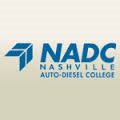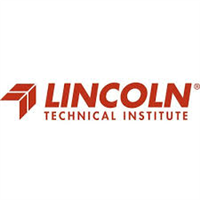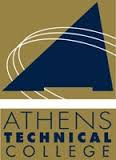What do they do?
Diagnose, adjust, repair, or overhaul mobile mechanical, hydraulic, and pneumatic equipment, such as cranes, bulldozers, graders, and conveyors, used in construction, logging, and mining.
Also known as:
Construction Equipment Mechanic, Crane Mechanic, Equipment Mechanic, Equipment Mechanic Specialist, Equipment Technician, Field Mechanic, Field Service Technician, Field Technician, Forklift Technician, Heavy Duty Mechanic, Heavy Equipment Field Mechanic, Heavy Equipment Mechanic, Heavy Equipment Technician, Maintenance Mechanic, Master Mechanic, Mechanic, Mobile Heavy Equipment Mechanic
-
2.2%
Change
Ranks #49 in job growth rate510Job Openings
Ranks #11 in net job growth
Looking for colleges that offer a specific major? Use the College Match Tool to find your best-matched schools and discover your estimated Net Price!
- High school diploma equivalent (47%)
- Some college, no degree (24%)
- Associate's degree (13%)
- Less than high school diploma (11%)
- Bachelor's degree (4%)
- Master's degree (1%)
- Doctorate or Professional Degree (<1%)
People in this career often have these skills:
- Troubleshooting - Determining causes of operating errors and deciding what to do about it.
- Repairing - Repairing machines or systems using the needed tools.
- Equipment Maintenance - Performing routine maintenance on equipment and determining when and what kind of maintenance is needed.
- Operations Monitoring - Watching gauges, dials, or other indicators to make sure a machine is working properly.
- Operation and Control - Controlling operations of equipment or systems.
- Equipment Selection - Determining the kind of tools and equipment needed to do a job.
- Quality Control Analysis - Conducting tests and inspections of products, services, or processes to evaluate quality or performance.
People in this career often have talent in:
- Manual Dexterity - The ability to quickly move your hand, your hand together with your arm, or your two hands to grasp, manipulate, or assemble objects.
- Control Precision - The ability to quickly and repeatedly adjust the controls of a machine or a vehicle to exact positions.
- Finger Dexterity - The ability to make precisely coordinated movements of the fingers of one or both hands to grasp, manipulate, or assemble very small objects.
- Extent Flexibility - The ability to bend, stretch, twist, or reach with your body, arms, and/or legs.
- Near Vision - The ability to see details at close range (within a few feet of the observer).
- Problem Sensitivity - The ability to tell when something is wrong or is likely to go wrong. It does not involve solving the problem, only recognizing that there is a problem.
- Arm-Hand Steadiness - The ability to keep your hand and arm steady while moving your arm or while holding your arm and hand in one position.
- Multilimb Coordination - The ability to coordinate two or more limbs (for example, two arms, two legs, or one leg and one arm) while sitting, standing, or lying down. It does not involve performing the activities while the whole body is in motion.
- Visualization - The ability to imagine how something will look after it is moved around or when its parts are moved or rearranged.
- Deductive Reasoning - The ability to apply general rules to specific problems to produce answers that make sense.
- Information Ordering - The ability to arrange things or actions in a certain order or pattern according to a specific rule or set of rules (e.g., patterns of numbers, letters, words, pictures, mathematical operations).
- Reaction Time - The ability to quickly respond (with the hand, finger, or foot) to a signal (sound, light, picture) when it appears.
People in this career often do these activities:
- Replace worn, damaged, or defective mechanical parts.
- Repair worn, damaged, or defective mechanical parts.
- Inspect completed work to ensure proper functioning.
- Inspect mechanical equipment to locate damage, defects, or wear.
- Operate transportation equipment to demonstrate function or malfunction.
- Read technical information needed to perform maintenance or repairs.
- Reassemble equipment after repair.
- Dismantle heavy equipment or machinery.
- Test mechanical equipment to ensure proper functioning.
- Adjust equipment to ensure optimal performance.
- Maintain work equipment or machinery.
- Rewire electrical or electronic systems.
- Repair electrical components.
- Troubleshoot equipment or systems operation problems.
- Inspect mechanical components of vehicles to identify problems.
- Solder parts or connections between parts.
- Operate welding equipment.
- Maintain inventories of materials, equipment, or products.
- Order materials, supplies, or equipment.
- Schedule repair, installation or maintenance activities.
- Maintain repair or maintenance records.
- Clean equipment, parts, or tools to repair or maintain them in good working order.
- Lubricate equipment to allow proper functioning.
- Assemble mechanical components or machine parts.
- Align equipment or machinery.
- Fabricate parts or components.
- Supervise employees.
This page includes data from:

 Occupation statistics: USDOL U.S. Bureau of Labor Statistics Occupational Employment Statistics
Occupation statistics: USDOL U.S. Bureau of Labor Statistics Occupational Employment Statistics
 Videos: CareerOneStop, USDOL/ETA and the Minnesota Department of Employment & Economic Development
Videos: CareerOneStop, USDOL/ETA and the Minnesota Department of Employment & Economic Development








